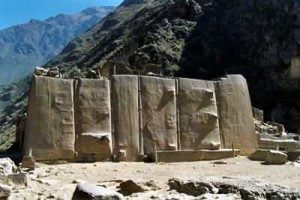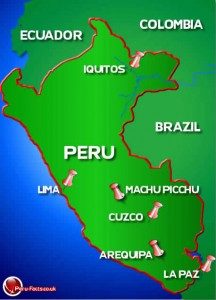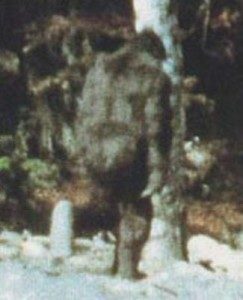 That’s no moon, that’s a space station! Well Sir, you may just be right. If you follow space news at all, you’re likely well aware of the Mars Madness that’s gripping the world of astrophysics and space exploration lately. You can hardly throw a digital rock on the internet without hitting some story about Curiosity, NASA’s intrepid and reasonably well functioning Mars Rover; the main component of NASA’s Mars Science Laboratory mission (MSL).
That’s no moon, that’s a space station! Well Sir, you may just be right. If you follow space news at all, you’re likely well aware of the Mars Madness that’s gripping the world of astrophysics and space exploration lately. You can hardly throw a digital rock on the internet without hitting some story about Curiosity, NASA’s intrepid and reasonably well functioning Mars Rover; the main component of NASA’s Mars Science Laboratory mission (MSL).
Part of the fervour is aimed at Mars’ two little moons Diemos and Phobos, both of which were discovered by American astronomer Asaph Hall in 1877. Since these two small satellites were first spotted, controversy has surrounded them. There have been questions about their sudden appearance and their strange orbits for more than a century.
Phobos in particular has garnered a great deal of infamy and is the focus of a whopper of a conspiracy theory. It’s hollow…and artificial.
This theory was first postulated by famous Soviet Astronomer and Astrophysicist Dr. Iosif Samuilovich Shklovsky, who calculated that Phobos orbit around Mars is not only faster than it should be, but is decaying. From this Shklovsky concluded that Phobos is actually a mammoth spaceship.
 Prior to Shklovsky’s observations, Russian Astronomer Dr. Cherman Struve made detailed and precise calculations about the orbits of both moons, but over the following decades, Shklovsky noticed that Phobos’ orbital velocity and position no longer matched Struve’s mathematical predictions.
Prior to Shklovsky’s observations, Russian Astronomer Dr. Cherman Struve made detailed and precise calculations about the orbits of both moons, but over the following decades, Shklovsky noticed that Phobos’ orbital velocity and position no longer matched Struve’s mathematical predictions.
Shklovsky theorised that Phobos was much, much lighter than previously thought, and was therefore subject to tidal forces on Mars, he concluded: “There’s only one way in which the requirements of coherence, constancy of shape of Phobos, and its extremely small average density can be reconciled. We must assume that Phobos is a hollow, empty body, resembling an empty tin can.”
This isn’t the only evidence though. Questions about the sudden appearance of both moons in 1877 or so have been floated about the astrophysical community for 100 years. Despite the fact that the capable technology and know-how were readily available many years prior to their discovery, and the fact that Mars has elicited a huge amount of interest for millennia, no one else had ever observed moons orbiting Mars. This seems to support the idea that Phobos and possibly also Diemos are giant orbiting space craft. Craft built by…who knows?
It doesn’t stop there though. The ESA, or the European Space Agency, NASA’s European counterpart and the second largest space agency in the world have taken a surprising stance on this issue. An ESA study abstract that appeared in

the peer-reviewed Geophysical Research Letters (a semi-monthly scientific journal published by the American Geophysical Union) reveals that Phobos is not what many astrophysicists and astronomers have thought for years, a captured asteroidal satellite.[1]
“We report independent results from two subgroups of the Mars Express Radio Science (MaRS) team who independently analyzed Mars Express (MEX) radio tracking data for the purpose of determining consistently the gravitational attraction of the moon Phobos on the MEX spacecraft, and hence the mass of Phobos. New values for the gravitational parameter (GM=0.7127 ± 0.0021 x 10-³ km³/s²) and density of Phobos (1876 ± 20 kg/m³) provide meaningful new constraints on the corresponding range of the body’s porosity (30% ± 5%), provide a basis for improved interpretation of the internal structure. We conclude that the interior of Phobos likely contains large voids. When applied to various hypotheses bearing on the origin of Phobos, these results are inconsistent with the proposition that Phobos is a captured asteroid.”
This can only be interpreted one way, according to Casey Kazan[2], and that is that Phobos is an artificially constructed space ship that was built, obviously, by extraterrestrials.
“…the MARSIS radar reflections officially published on the official ESA Phobos website contained explicit scientific data, from multiple perspectives, which strongly “supported the idea that this is what radar echoes would look like, coming back from inside ‘a huge… geometric… hollow spaceship’.”

To top it all off, now there are claims, and photos, of a strange monolithic structure on the surface of Phobos. According to famous Astronaut Edwin “Buzz” Aldrin in a C-SPAN interview from several years ago: ”We should visit the moon of Mars. There is a monolith there, a very unusual structure on this little potatoes-shaped object that goes around Mars,”
As you might imagine, this theory hasn’t gone unnoticed by the sceptics, and Kazan has been accused of perpetuating a hoax originally perpetrated by Shklovsky, though many contend that Shklovsky’s original conclusions are valid and should be accepted. Supporters often cite the many failed attempts at reconnaissance of Phobos and Diemos, what with the disappearance of two probes sent to survey the moons and the technical problems that have plagued other attempts. Mainstream science however, is not in the mood for giant artificial moon/spaceship/space-station hijinks and to date the official story is that Phobos is composed of highly porous phyllosilicates.
The truth of the matter may never be known, at least until man sets foot on the Martian surface, but wild speculation aside, Mars Madness is bound to continue well into the future.
Express your opinion in the comment section below.
[1] Andert, T. P., P. Rosenblatt, M. Pätzold, B. Häusler, V. Dehant, G. L. Tyler, and J. C. Marty (2010),Precise mass determination and the nature of Phobos, Geophys. Res. Lett., 37, L09202, doi:10.1029/2009GL041829.
[2] Casey Kazan, “European Space Agency: Mars Moon Phobos ‘Artificial’”, http://realityzone-realityzone.blogspot.ca/2010/06/european-space-agency-mars-moon-phobos.html




 If there was an efficient way to attain internet infamy and to lose all professional credibility, it would definitely be fabricating evidence, staging online publicity stunts and perpetrating academic trickery.
If there was an efficient way to attain internet infamy and to lose all professional credibility, it would definitely be fabricating evidence, staging online publicity stunts and perpetrating academic trickery.


 Months later, as I hosted a party that included family and close friends, my guests insisted on an extended tour of the hotel, and it was my pleasure to oblige. We wandered the halls, exploring and marvelling at the splendour of this once opulent building, eventually congregating in a large suite on the backside of the hotel. As we stood talking and laughing, we noticed something moving through the over-grown gardens surrounding the concrete baths located halfway up the backyard. Wispy and white, this apparition, which we couldn’t completely make out, appeared to move from bath to bath. Each of us stood in amazement, silently watching through the large windows as this ghostly body glided over the shrubbery. We watched for a few minutes, until eventually it moved toward the building and disappeared near the rear gallery doors. Suffice it to say, my guests were eager to get out of this haunted building, so we walked, with goose bumps, all the way from the fourth floor to the service entrance on the first floor. We never did see the apparition again, but the building always provoked a feeling that one was being watched.
Months later, as I hosted a party that included family and close friends, my guests insisted on an extended tour of the hotel, and it was my pleasure to oblige. We wandered the halls, exploring and marvelling at the splendour of this once opulent building, eventually congregating in a large suite on the backside of the hotel. As we stood talking and laughing, we noticed something moving through the over-grown gardens surrounding the concrete baths located halfway up the backyard. Wispy and white, this apparition, which we couldn’t completely make out, appeared to move from bath to bath. Each of us stood in amazement, silently watching through the large windows as this ghostly body glided over the shrubbery. We watched for a few minutes, until eventually it moved toward the building and disappeared near the rear gallery doors. Suffice it to say, my guests were eager to get out of this haunted building, so we walked, with goose bumps, all the way from the fourth floor to the service entrance on the first floor. We never did see the apparition again, but the building always provoked a feeling that one was being watched.



 In a world that boasts some very strange things, it seems that Peru has more than it’s fair share. Located on the pacific side of Central America, Peru is the most extreme country in the world. It boasts the world’s highest tropical mountains, the world’s driest desert, the world’s most biologically diverse rain forest, the world’s richest fishery, and the world’s most extraordinary cultural and archaeological diversity.
In a world that boasts some very strange things, it seems that Peru has more than it’s fair share. Located on the pacific side of Central America, Peru is the most extreme country in the world. It boasts the world’s highest tropical mountains, the world’s driest desert, the world’s most biologically diverse rain forest, the world’s richest fishery, and the world’s most extraordinary cultural and archaeological diversity.
 Machu Picchu
Machu Picchu As I’ve mentioned many times before, I’m an atheist. I don’t believe in God, nor do I believe in any of the dogmatic ideas that follow. In light of this some might question my penchant for the paranormal, as much of the paranormal derives from a religious belief, i.e. ghosts are the product of the immutable soul. I admit, however humbly, that there does appear to be a bit of a conflict between atheism and paranormal research.
As I’ve mentioned many times before, I’m an atheist. I don’t believe in God, nor do I believe in any of the dogmatic ideas that follow. In light of this some might question my penchant for the paranormal, as much of the paranormal derives from a religious belief, i.e. ghosts are the product of the immutable soul. I admit, however humbly, that there does appear to be a bit of a conflict between atheism and paranormal research.
 I believe there’s a link between paranormal experiences and religious experiences, as I discussed in my previous article titled
I believe there’s a link between paranormal experiences and religious experiences, as I discussed in my previous article titled 




